After Elon Musk's presentation on SpaceX's new Interplanetary Transport System concept, something changed. There's this new buzz of optimism—or, if not exactly optimism, at least possibility.
The idea of humans living on Mars has always seemed Science-Fictiony, or something for some future generation to consider. But today in 2016, it seems possible and within grasp; a near-term goal that's actively being pursued.
 Artist's concept of NASA's forthcoming SLS rocket. Image: NASA/MSFC.
Artist's concept of NASA's forthcoming SLS rocket. Image: NASA/MSFC.
And it's not just being pursued by SpaceX, it's also being pursued by government—NASA is pushing really hard to maintain its internal goal of landing humans on Mars in the 2030's. And this isn't something that they've considered moving on from with the forthcoming administration change. Elections have a way of shaking things up, but Congress has been writing it into law that NASA is going to Mars.
Even President Obama just wrote a piece in which he continues his endorsement of NASA's Journey to Mars and even outlines further details about the plan moving forward. We're going there, it's happening. And there are a few reasons why establishing a colony on Mars isn't just possible, but completely inevitable in the grand scheme of things:
1. Because it's there
2. Technology is rapidly and constantly improving
3. Technology makes hard-to-reach places more accessible
4. There are no physical laws prevnenting Mars colonization
5. Science Fiction ideas are becoming more real
6. We're not on any strict timetable
1. IT'S THERE.
As human beings, we possess an innate desire to explore and expand our territory. Without this desire, our hunter-gatherer ancestors wouldn't have left Africa and inhabited every part of the globe. Without it, our European ancestors wouldn't have sailed across the Atlantic and colonized the Americas—and then there would be no United States, no NASA, and probably no SpaceX.
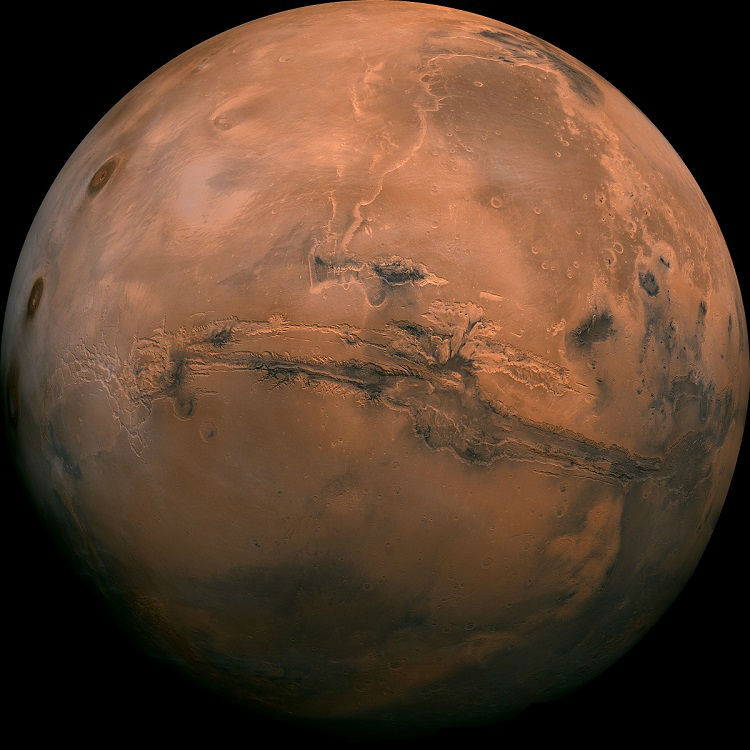 Mars. It's big, red and funky lookin. And humans will one day live there. Image: NASA/JPL-Caltech.
Mars. It's big, red and funky lookin. And humans will one day live there. Image: NASA/JPL-Caltech.
Without this drive to explore, nobody would've bothered walking thousands of kilometers from the Antarctic coast to the South Pole just for the sake of doing it. A century later, and dozens of scientists live and work year-round at the South Pole, one of the most inaccessible places on Earth (second only to the bottom of the ocean, which is another place we've been).
The same thing is going on in space—the International Space Station (ISS) has been continually inhabited by astronauts living and working in Low-Earth Orbit (LEO) for nearly sixteen consecutive years. There are already plans to extend this continuous presence through 2024, and there's no reason to think that we won't do something similar with the surface of the Moon and/or Mars in the near future.
The European Space Agency (ESA) is currently seeking international partnership in hopes of establishing a permanent base on the Moon—a place for scientists to live and work for extended periods of time. Just like they do on the ISS, just like they do in Antarctica. But on the Moon. And countries like China and Russia want in on this.
Meanwhile, NASA and SpaceX have their sights set on long-term Mars goals for exploration and settlement, respectively. The possibility of cooperation here is high. And let's not forget Blue Origin, the pet project of Amazon.com's founder and CEO Jeff Bezos, whose singular goal is to expand human presence in space by making it more accessible and affordable for everyone.
There's no reason to think that human expansion will stop with Earth, or even in this Solar System. Mars and a plethora of other destinations await human expansion, and as long as technological innovation doesn't grind to a rapid halt, we'll eventually get there.
2. TECHNOLOGY IS RAPIDLY IMPROVING
Over the past few centuries, our scientific understanding of the natural world has skyrocketed. Technological innovation has been accelerating for a long time, and there aren't any signs of it slowing down anytime soon.
 What a difference 88 years can make. Image (top): U.S. Air Force, 1991. Image (top): Wright Brothers first flight, 1903.
What a difference 88 years can make. Image (top): U.S. Air Force, 1991. Image (top): Wright Brothers first flight, 1903.
This doesn't mean that it will continue to accelerate indefinitely—there are a few reasons why it could slow down or stall at some point in the future, but these are unlikely to happen anytime soon. There are three big reasons for this:
- Capitalism is the dominant political and economic system in the world today.
- Innovation is a very profitable business.
- Government Subsidization of science and the pursuit of knowledge/information.
As human beings, we have an insatiable appetite for new and better technology—for things that will make our lives better. This new technology only comes about through research & development, which is a very costly thing to invest in. Luckily, the potential returns on innovation are so huge that most developed nations are happy to invest untold billions of dollars into R&D, which results in a heavily subsidized technology industry which in turn becomes heavily profitable for tech companies.
The inherent profitability of technology (stuff we want and are willing to pay for) plus government subsidization (capitalism also ensures that countries are competing with each other for technological supremacy) is a recipe for technological growth. Exponentially improving technologies have been the result, and today we have smartphones instead of flip-phones.
One day, rich people will have a holiday home on Mars to make up for the tropical and formerly beach-front one that's now underwater due to global warming (unless they just decide to turn it into an underwater palace of some kind). That's called adaptation.
3. TECHNOLOGY MAKES PREVIOUSLY HARD-TO-REACH PLACES MORE ACCESSIBLE
Back when the first viable airplanes were invented at the turn of the 20th Century, it was unimaginable that within a couple of generations we'd have a multi-trillion-dollar commercial airline industry that serves millions of passengers every day. Never mind that this number continues to grow, and that regular air travel is now nearly as ubiquitous as driving a car to work.
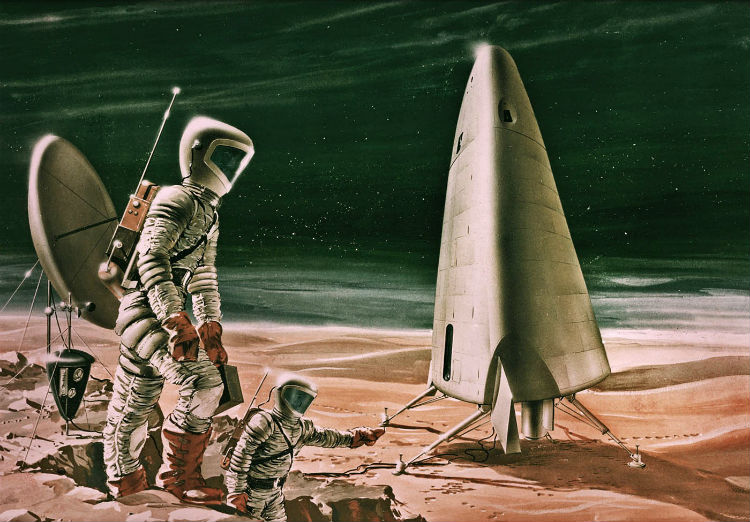 Artist's concept of a Mars mission in 1963. For some reason, it looks nothing like Musk's Interplanetary Transpot System... Image: NASA/Aeronutronic Divison of Philco Corp.
Artist's concept of a Mars mission in 1963. For some reason, it looks nothing like Musk's Interplanetary Transpot System... Image: NASA/Aeronutronic Divison of Philco Corp.
On top of this, we have self-driving cars, levitating trains that are gradually inching up towards the speed of sound, and the concept for a Hyperloop tube transport system that could cross North America in a matter of hours.
It's important to note here, with regards to space travel, that we're still in the age of rockets—sort of the equivalent to propeller airplanes before jet engines were invented. And as far as in-space propulsion is concerned, we may as well be using hot air balloons to travel between planets. There's a lot of improvement still to be made here.
Whatever the case, rockets are becoming cheaper, more plentiful, and probably even reusable in the near-term (similar to commercial airliners). And just as airplane tickets have dropped substantially since the establishment of a commercial industry open to the public, the cost of being launched into orbit may be on the verge of seeing a dramatic price drop.
And if this seems at all unlikely, consider this: 200 years ago, no human being had ever stepped foot on the continent of Antarctica, and the first expeditions to the frozen Southern continent required a lot of external funding just to set sail. Today, you can hop on an airplane and go participate in one of the many "ice marathons" in Antarctica, annual running events held down on the most isolated continent on Earth.
So dust of those moon shoes, because you better believe there will one day be Lunar and Martian marathons as well—spacesuits probably mandatory.
4. THERE ARE NO PHYSICAL LAWS PREVENTING CONSTRUCTION OF A MARS COLONY
We don't quite have the level of technology needed to create a sustainable Mars colony ('sustainable' as in 'not requiring supplies from Earth') just yet. And we definitely don't yet have the level of financial investment needed to turn this concept into a reality.
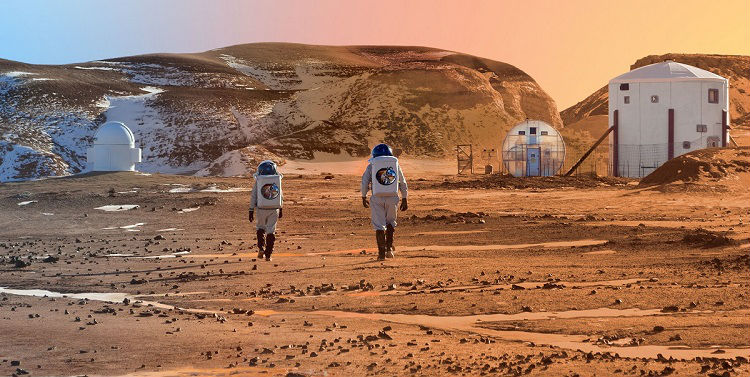 This isn't really Mars, it's people pretending they're on Mars. But you get the idea. Image: Mars Society MRDS.
This isn't really Mars, it's people pretending they're on Mars. But you get the idea. Image: Mars Society MRDS.
But there isn't any physical limitation here, it's only a matter of having the resources (ie. money) to get it done—and procuring those resources will only require a foreseeable return-on-investment. Year over year, our understanding of our Solar System as a whole is expanding, the amount of resources available to our civilization as a whole is increasing, and our level of technological achievement is growing.
Improvements like these tend to compound one another. For example, spacecraft propulsion is steadily becoming more and more efficient. Imagine a 10% increase in propulsion output coming at the same time as materials engineering figures out a way to mass-produce a new lightweight alloy that can shave 15% of the weight of a given spacecraft.
As this is happening, more efficient solar panels drop the spacecraft weight by another 10%. So, instead of a 2,000 kilogram spacecraft being accelerated by 10 km/s with a given amount of fuel, improved propulsion technology increases that number to 11 km/s. Add in a total of 25% savings in spacecraft weight, and we now only have to accelerate a 1,500 kilogram spacecraft—allowing us to go faster using the same amount of fuel (up to 14km/s rather than 10km/s), or use less fuel to go just as fast.
If we use less fuel to go just as fast, then a much smaller rocket is required to launch the spacecraft (saving weight on fuel + spacecraft weight)—a cost savings. Or, we can send the spacecraft to its destination 40% quicker than previously planned, allowing for a shorter mission timeline—also a cost savings.
Either way we look at it, small gains in multiple areas can lead to huge gains overall. And it's precisely this kind of compounding innovation that's allowing companies like SpaceX to launch rockets cheaper than ever before.
As time goes on, the up-front cost of establishing a Mars colony will continue to drop. At the same time, demand for such a facility will continue to grow—a lot of people are interested in making humanity a multi-planetary species, and a lot of scientists are interested in being able to manually explore the red planet with human bootprints on the ground.
Once these lines of cost vs demand finally converge (NASA foresees this happening in the 2030's), the first humans will step foot on Mars shortly thereafter—with or without government subsidization.
5. STUFF FROM SCIENCE FICTION IS BECOMING REALITY
It's 2016. Virtual reality is here. Self-driving cars are everywhere. Combustion engines are on their way out. A private company is planning to colonize Mars. Genetic engineering is flourishing. Internet video calling is replacing phone lines. Nike just came out with self-tying shoelaces. Cats and dogs are living together. Mass hysteria.
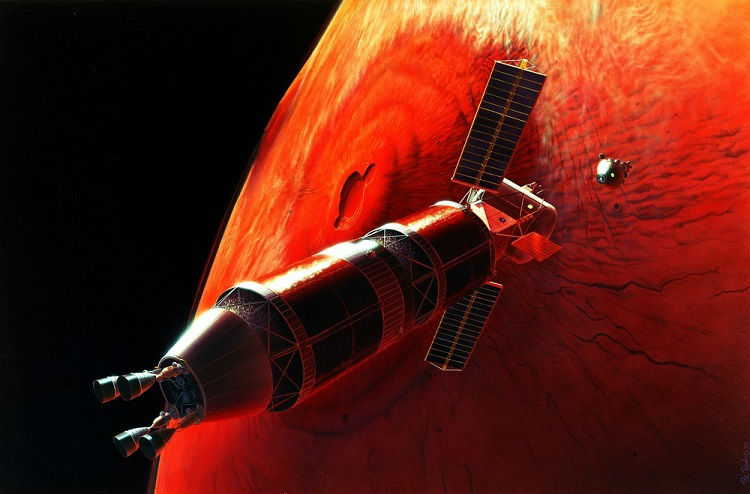 This looks like something we could build right now. Image: NASA/Pat Rawlings.
This looks like something we could build right now. Image: NASA/Pat Rawlings.
But we're not living in the Star Trek universe yet. And we haven't reached the 1990's Total Recall level of madness either. I'd say we're more or less somewhere in between 1902's The Trip to the Moon and 1968's 2001: A Space Odyssey.
This is a good spot to be. Reality is still somewhat cohesive, though the emergence of virtual reality may soon change that. We haven't created a hostile artificial super-intelligence yet, but it may be on the horizon. We've yet to bump into any scary alien artifacts—though the jury's still out on Tabby's Star, so stay tuned for that one.
We're in a nice calm place when it comes to Sci-Fi concepts becoming real and tangible things that we experience in our daily lives. And that's more or less what we have to expect going forward, because the mass hysteria inherent to most Science Fiction doesn't often manifest itself in reality.
The only killer robots we have as of now are the Air Force drones being piloted by human beings. Google never became Skynet, despite having fleet of remote-control cars at its disposal. And we don't yet need Blade Runner's genetically engineered replicants for menial tasks, because we still have plenty of low-wage workers in the developing world to do those things for us. Wow, capitalism in 2016 sure is boring.
6. WE HAVE PLENTY OF TIME
Despite all of the war and violence depicted on TV and through social media, the world is the safest it's ever been (check out Steven Pinker's TED Talk if you want statistics). And we also know more about the Earth than we've ever known—climate change may still screw us over real bad, but we have quite a bit of time to figure out a solution before things start to get really bad (that is not an excuse or endorsement, only a reflection of current government policy).
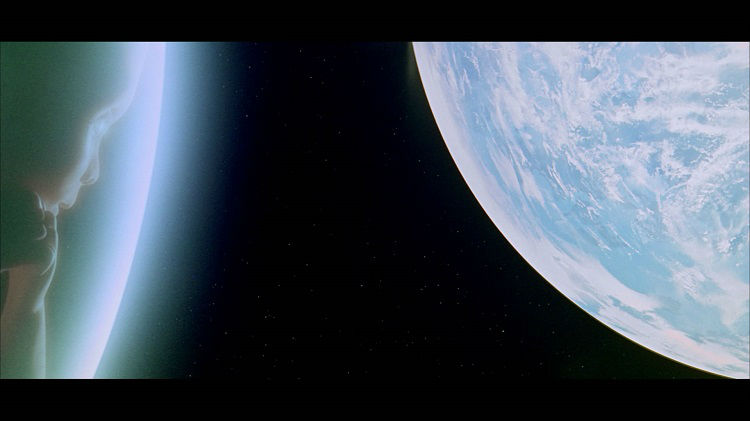 We are, after all, still infants on the cosmic stage. Image: 2001: A Space Odyssey.
We are, after all, still infants on the cosmic stage. Image: 2001: A Space Odyssey.
It's really unlikely that the world will end soon, so there's a really good chance that we'll end up spreading humanity throughout the Solar System before the doomsday clock strikes midnight. Whether or not it'll be possible for these outposts of humanity to survive IF Earth does end up biting the dust will depend on how plentiful these new frontiers-people are and their aptitude for finding resources elsewhere in the Solar System.
The Ancient Greek mathematician Archimedes had a famous quote:
δῶς μοι πᾶ στῶ καὶ τὰν γᾶν κινάσω.
Yes, that's in Greek. I can't read it either. According to Wikiquote, the translation goes something like:
"GIVE ME A LONG LEVER AND A PLACE TO STAND AND I WILL MOVE THE EARTH."
The idea behind this is that, even though the Earth is really, really big compared to a single human being, a human equipped with an impossibly long and indestructible lever (and a fulcrum point of course) would be able to pull on that lever and, through the power of leverage, move the entire Earth.
Obviously, this is just a metaphor. But it perfectly represents the joint concepts of time and change. Instead of one human, we have all of humanity. And instead of an impossibly long lever, we have time itself. Given enough time, and if we leverage the potential of all humanity to gradually improve, colonizing Mars and the rest of the Solar System isn't just possible, it's inevitable.
All we have to do is survive long enough to see it through. And that doesn't sound impossible... Only slightly more challenging than really, really easy.




